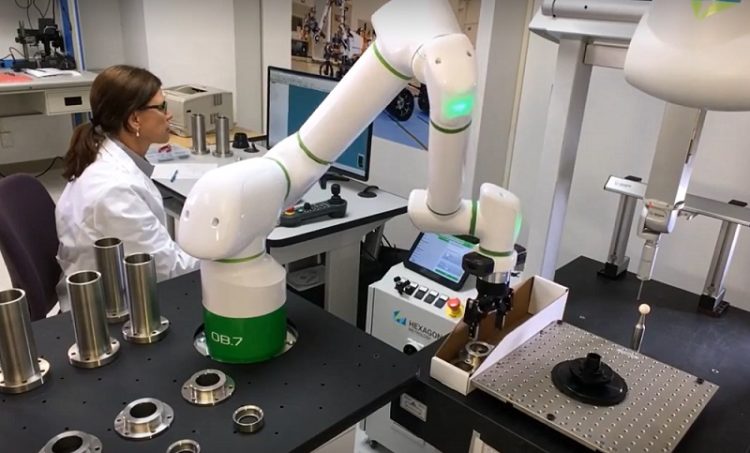Step 7: Successfully Implement Cobots
Risk Assessment
It’s hard to believe but OSHA has not published standardized risk assessment regulations pertaining to collaborative robots (cobots), although it likely won’t be too long before they do. The main objective for developing the first collaborative robot was to combine repetitive performance of industrial robots with individual skills and abilities of humans in the same workspace. Humans have the ability for conducting imprecise movements while robots are precise, powerful, and have endless endurance. Combining the two together in the same workspace provides manufacturers the best flexible production scenario possible … at this point.
There’s a lot published out there on safety for industrial robots, but ISO/TS 15066:2016 provides guidance for collaborative robot operations where a robot system and human share the same workspace. Built-in safety controls related to parameters such as speed and force are critical to the safety of the human counterpart. Since there isn’t a specific OSHA guide pertaining to risk assessments for cobots, it is still in the best interest of manufacturers to understand these parameters to avoid injury and legal responsibility. Risk assessments are necessary to identify the hazards and estimated risks associated with cobot-system applications so that proper risk reduction measures can be implemented.


With nothing specific written, and most that is references back to industrial robots, it’s difficult to determine what a proper risk assessment would look like. However, there are specific definitions that you will begin to hear related to conducting thorough risk assessments. These definitions pertain to contact between cobot and human counterpart, and they are:
Transient Contact
Contact between an operator and part of a robot system, where the operator or human body part is not clamped and can recoil or retract from the moving part of the robot system.
Quasi-static Contact
Contact between an operator and part of a robot system, where the operator or human body part can be clamped between a moving part of a robot system and another fixed or moving part of the robot cell.
The Importance of Workplace Awareness
It is important for everyone working with a cobot to be aware that when an employee is going to be sharing workspace, cobot speed must be limited to 10”/second or 250mm/second. This is what defines “collaborative” level and anything over that changes the entire dynamic of the workspace to an industrial environment, thus a risk assessment is required. Even if you never operate your cobot out of collaborative mode, consideration should be given to certain hazards such as:

Considering Risk Reduction Measures
Risk reduction measures should always be considered, even if operating in collaborative mode. This reduces liability and shows employees that you are concerned for their safety and well-being. For the good of everyone, consider the following risk reduction procedures:
All cobot manufacturers include safety warnings in their instruction/maintenance manuals, and include a sign-off sheet that a thorough risk assessment has been performed. Remember to conduct a risk assessment each time the cobot is moved to another location. Often times a password is required to enable use of a cobot or if the unit is going to operate beyond collaborative speeds, force, or power levels.

Thorough Risk Assessment Key to Cobot Safety
Absolute Machine Tools takes risks seriously, and encourages a thorough assessment to ensure safety. It is much better to take precautions immediately even though OSHA has not formerly established regulations. As mom always said, “It’s better to be safe than sorry” — and everyone knows mom’s always right.
Our A+ Automation Team has years of extensive experience in the cobot/robot automation arena. We understands how to integrate a cobot, from exploring and guiding you to the right cost-effective solution, floor plan design, installation, integration, training, and after-sales support to final success. Email us today at info@absolutemachine.com to get started!
For more information visit these links below:



